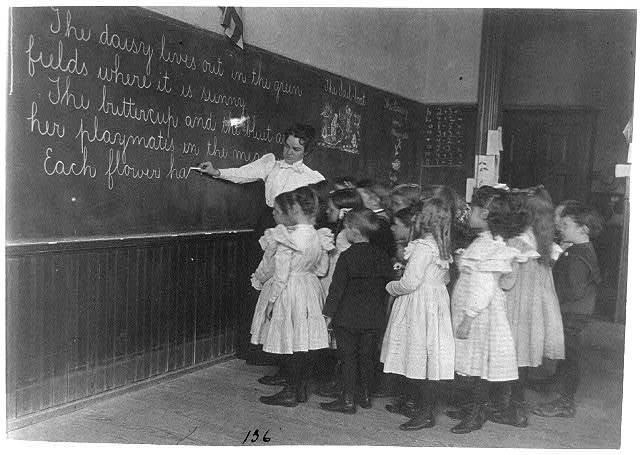Prompt: Assume you have your first full time teaching job and the principal tells you that you’ve been selected to pilot the “1 to 1 Project.” What are your thoughts about the opportunities and challenges that presents?
Talk to a group of teachers, and bring up one-to-one classrooms, and you will probably hear lots of opinions. Five years ago, their response would have been overwhelmingly negative. Ten years ago, probably just laughs. Opinions have changed drastically, but not more since one-to-one has become a reality in many schools. Technology is overwhelmingly available, even if not every classroom is equipped with the latest web-enabled electronics. Often, students have access to technology of their own; they are constantly multi-tasking and learning and socializing, all things that are vital to their development as adolescents. Yet, in many one-to-one classrooms, those that have greater access to technology outside the classroom are not necessarily better off than their peers with more limited access. In such classrooms, students of all ability and intelligence levels too easily fall behind because of their teachers’ assumptions that they know how to use the technology they have been given.
In my limited experience volunteering in one-to-one classrooms, specifically social studies classrooms, teachers generally prefer to begin implanting technology in the classroom by assigning research projects. Students choose or are assigned a topic and are sent to the broad reaches of the internet to find information that they will later present in a PowerPoint, style mandated, of course. The assignment seems simple enough. However, it is not uncommon to find that students do not know how to navigate the infinite repository of information that is the internet. They type the name or title of their topic into their chosen browser, pick the first source, often a semi-reliable wiki source, and copy/paste the information into their presentation. Not only is their research flawed, so, too is their presentation. An assignment that the teacher intended to spread out a vast amount of information and share it with the class just became a waste of class time, and required even more time to re-teach the content.
Suggested solution? First, teachers need to make sure that their students know how to conduct effective research, the methods and strategies that will help them be successful. This not only means how and where to search, but also, what kinds of questions they should ask of their topic and their sources. Sourcing and contextualization are key in any kind of historical research. These should be step one.
Step two is creating an intentional research question for students to answer. Guiding questions and scaffolding are exceptionally useful when encouraging students in a specific research direction. Students need to know exactly what they should be looking for, and what the end product should be if they are to be successful in their endeavors.
Finally, students need to be introduced to what might be called the best practices of presentation. Presentation is as much for the presenters as it is for the audience. If the audience has not learned something by the end of the presentation, it has been for naught. Therefore, it is important that students know the best ways to teach content so that their peers will remember it. This is all about teaching to the brain, and using educational neuroscience to their benefit. This does not require much background, except the kinds of visual representations that are most meaningful.
In the end, there is more to one-to-one classrooms than research and presentations. But if teachers don’t start at square one and teach the building blocks of using that technology, students will be no better off than when they started.
Image Credit: Library of Congress
Title: Elementary school children standing and watching teacher write at blackboard, Washington, D.C.
Creator(s): Johnston, Frances Benjamin, 1864-1952, photographer
Date Created/Published: CA 1899

